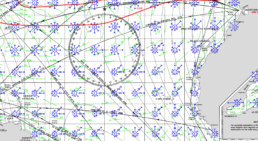East-to-west Atlantic crossing from the Canary Islands (typically Gran Canaria or La Gomera) to the Caribbean (often Saint Lucia, Martinique, Barbados, or Grenada) is one of the most classic ocean passages in cruising. Below is a breakdown of the key steps to prepare and execute the crossing, from planning to arrival.
🧭 1. Planning & Preparation
-
Start Point: Canary Islands (Las Palmas, Puerto Rico, or San Sebastián de La Gomera)
-
Route: Southwest until you hit the trade winds (~20°N / 30°W), then turn west toward the Caribbean
-
Destination: Saint Lucia, Martinique, Barbados, Grenada, or other Windward Islands
“Sail SW until the butter melts, then turn right”

📋 2. Best Time to Leave
-
Departure Window: Mid-November to early January
-
This avoids hurricane season (ends Nov 30) and catches consistent northeast trade winds
-
Many sailors coordinate with ARC (Atlantic Rally for Cruisers) but a growing number sail independently
3. Check-Out & Clearance
-
Canary Islands (Spain):
-
Complete departure clearance with port authority and Policia Nacional
-
Ensure Schengen exit stamp for non-EU crew
- Enable vessel tracking with the Ocean Posse ( datahub or equivalent )
- Get on weekly prep call schedule
- Order all spares
-
⚓ 4. Final Preparations before departure
-
Provisioning: Stock up on dry goods, fresh produce, long-life dairy, water (aim for 4-5L/day/person), and emergency rations
- Medical and Emergency procedures, contacts, medical kit
-
Fuel & Water: Fill all tanks and jerry cans – 3 liters of water per person per day plus emergency water rations stashed – fill your diesel tanks
-
Spare Parts & Tools: Rigging, filters, pumps, sail repair, emergency steering, OPENCPN, etc.
-
Safety Equipment: EPIRB, life raft, MOB gear, storm sails, satellite comms, VHF, DSC, write down emergency numbers,
-
Weather Forecasting Tools: PredictWind, IridiumGO!, Starlink (if equipped) Chris Parker weather routing
- Communications: install LINE and Upgrade your starlink subscription to offshore – tracking !
-
Check Systems: Steering, rigging, autopilot, batteries, charging systems, throughulls, watermaker, backup navigation, backup steering, backup battery
-
Sails: Downwind sail setup (poled-out genoa, twin headsails, parasailor, or spinnaker wing on wing)
- Sea trial & Rig Check Rig Tune
🌊 5. The Crossing
-
Typical Distance: ~2,700 NM (Canaries to Windward Islands)
-
Duration: ~15–254 days (varies by boat and conditions)
-
Sailing Conditions:
-
Predominantly broad reach with northeast trade winds
-
Expect squalls, rain showers, and occasional calms
-
-
Watch System: 3- or 4-hour rotating watches; stay rested – minimum 3 max 5 tested crew – DO NOT TAKE ON HITCHHIKERS ( see crew selection )
-
Communication: Daily check-ins with other boats (SSB, Starlink, sat phone) and via LINE with OCEAN POSSE FLEET
-
Garbage: Plan waste management for long duration ( cans and bottles overboard ) plastic stays on board

6. Arrival in the Caribbean
-
Entry Clearance:
-
Customs, immigration, and health forms vary by island
-
Some islands offer eSeaClear, SailClear, or online pre-clearance
-
-
Post-arrival Tasks:
-
Secure marina or anchorage
-
Clean hull, check systems, relax and celebrate with rum punch
-
✅ 7. Optional: Join a Rally
-
ARC $2000+ or Ocean Posse: $ 300 annually
-
Offers safety in numbers, weather calls , camaraderie, and 24/7 support
-
Ocean Posse allows free-route flexibility and is cruiser-driven schedules – less stress run by professional seafarers
-
🗺️ Bonus: Strategic Route via CAPE VERDE ( the butter has melted here )
-
Cape Verde Islands (Mindelo on São Vicente): ~850 NM from Canaries ( discount sip fees with the Ocean Posse )
-
Reduces the long leg to the Caribbean (~2,100 NM from there)
-
Excellent for provisioning, repairs, and rest before the longest leg
-
WINDS
Tides and Currents
SWELL AND WAVES
PLANNING CHARTS
 DOWNLOAD PRINTABLE REFERENCE CHART 13MB >>
DOWNLOAD PRINTABLE REFERENCE CHART 13MB >>
PLANNING CHARTS
 DOWNLOAD PRINTABLE REFERENCE CHART 13MB >>
DOWNLOAD PRINTABLE REFERENCE CHART 13MB >>







